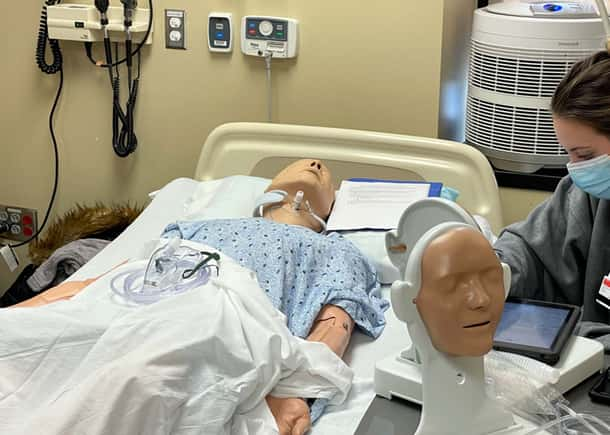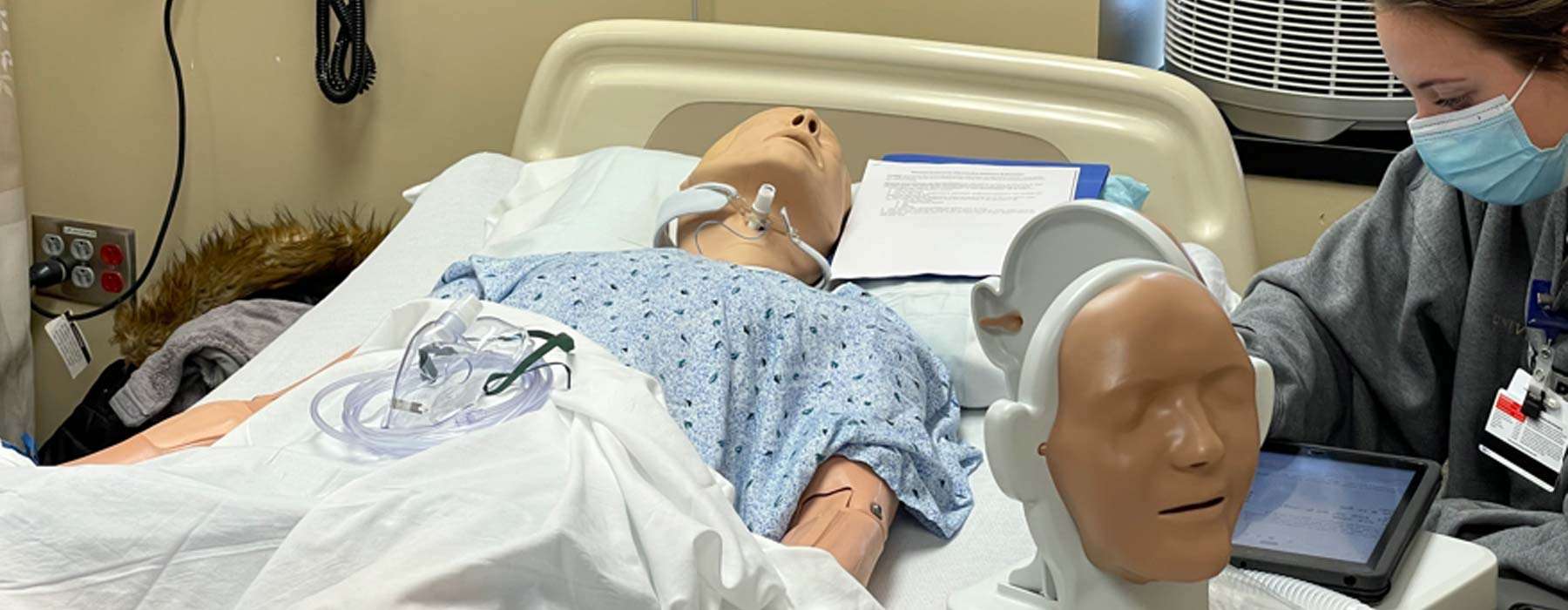Advancing Nursing Skills Mastery at the University of Rochester
Customer Story

Customer Story

The University of Rochester’s School of Nursing adopted a new approach to ensuring students' competence in fundamental skills.

The School of Nursing at the University of Rochester in Rochester, New York, currently serves nearly 170 students in its 12-month and hybrid-online 24-month accelerated bachelor's (ABSN) programs.
The challenge
Kaitlyn Picard, MS, RN, CCRN, CNE-cl is an Assistant Professor of Clinical Nursing and instructional design coordinator for the School of Nursing at the University of Rochester. In this role, she collaborates with course faculty to create learning activities and assessments that effectively build competence and ensure students are practice-ready.
Kaitlyn and the faculty recognized a need to incorporate more deliberate practice opportunities that allow students to master key foundational skills, like sterile field setup and inserting catheters.
"We were hearing over and over from our clinical faculty that students were not competent with specific skills [like IV medication administration] by the time they reached the last semester,"1 she explains. This finding is not specific to the University of Rochester's nursing program. It's well-documented in the nursing education literature that new graduate nurses are not fully prepared for practice.2
To fill the gap, they needed to find ways to build in more practice opportunities, including:
The emphasis on increased practice opportunities supports the program’s shift to competency-based education (CBE).
- Kaitlyn Picard, MS, RN, CCRN, CNE-cl
Assistant Professor of Clinical Nursing, University of Rochester School of Nursing in Rochester, New York

Kaitlyn and the faculty use the backward design framework to help their shift to CBE. This framework involves identifying an end goal – in this case, competency in specific high-impact skills – and then working backward to align activities and assessments to help students meet the goal.3
“We worked together using the backward design framework to really ensure all learning activities and assessments were aligned throughout the course, but also throughout the curriculum,”4 she explains.
The solution

To address the need for more deliberate practice to help build competency, Kaitlyn and the faculty decided to try SimCapture for Skills paired with the Modular Skills Trainer. SimCapture for Skills is a digital assessment and evaluation tool that supports student-driven learning. It works with the Modular Skills Trainer to:
The results
Utilizing SimCapture for Skills with the Modular Skills Trainer helped Kaitlyn and the faculty in several areas.

Kaitlyn found that the self-evaluation and peer evaluation options in SimCapture for Skills were key to helping students grow.
"A crucial piece...is self and peer evaluation during those practice opportunities," she says. "There’s a ton of literature out there [indicating] that there’s a lot of power in self-reflection, but also peer evaluation in order to improve."
SimCapture for Skills yielded student performance data that allowed Kaitlyn and the faculty to:
Using checklists in SimCapture for Skills allowed Kaitlyn and the faculty to increase transparency for the students, helping them to know exactly what they needed to do.
"[Something] that has become really evident to us is that transparent assessment in an accelerated program is key," she notes. The rigorous full-time program can be challenging for students because of the nature of its pace. "One way we can [help them succeed] is to be really transparent in what we want and what we expect of them."
"Having transparent assessments is an evidence-based teaching strategy," she adds. "So SimCapture helps us with that. We can tell students, 'Here’s the checklist you’re practicing with. It’s the same checklist that we're going to evaluate you within your summative demonstration.'"
Using checklists increased the level of uniformity because all students were being objectively measured based on the same checklists. This also helped maintain objectivity with the faculty. The approach to student evaluations can vary based on a number of factors. The checklists include hint text to help provide an objective measurement for faculty to consider when completing student evaluations.
The ability for students to perform self or peer evaluations helped free up some much-needed time for faculty.
"When peer evaluation or even self-evaluation is done correctly, the students are really getting a baseline of how competent they are in performing the competency or skill," she explains. "When that process is occurring, they're constantly refining their skill performance. And then when they think that they're ready to demonstrate it, they can then go to the instructor." At that point, the instructor could provide more specific, refined feedback.
"That's really how it can lessen the workload of faculty – because students are leaning on each other to provide evaluation," she points out. "The instructor can spend more time checking in individually as they're practicing amongst each other, but then also are giving very detailed feedback when the student is ready to demonstrate – vs. giving them a ton of feedback because they haven’t practiced the skill."
